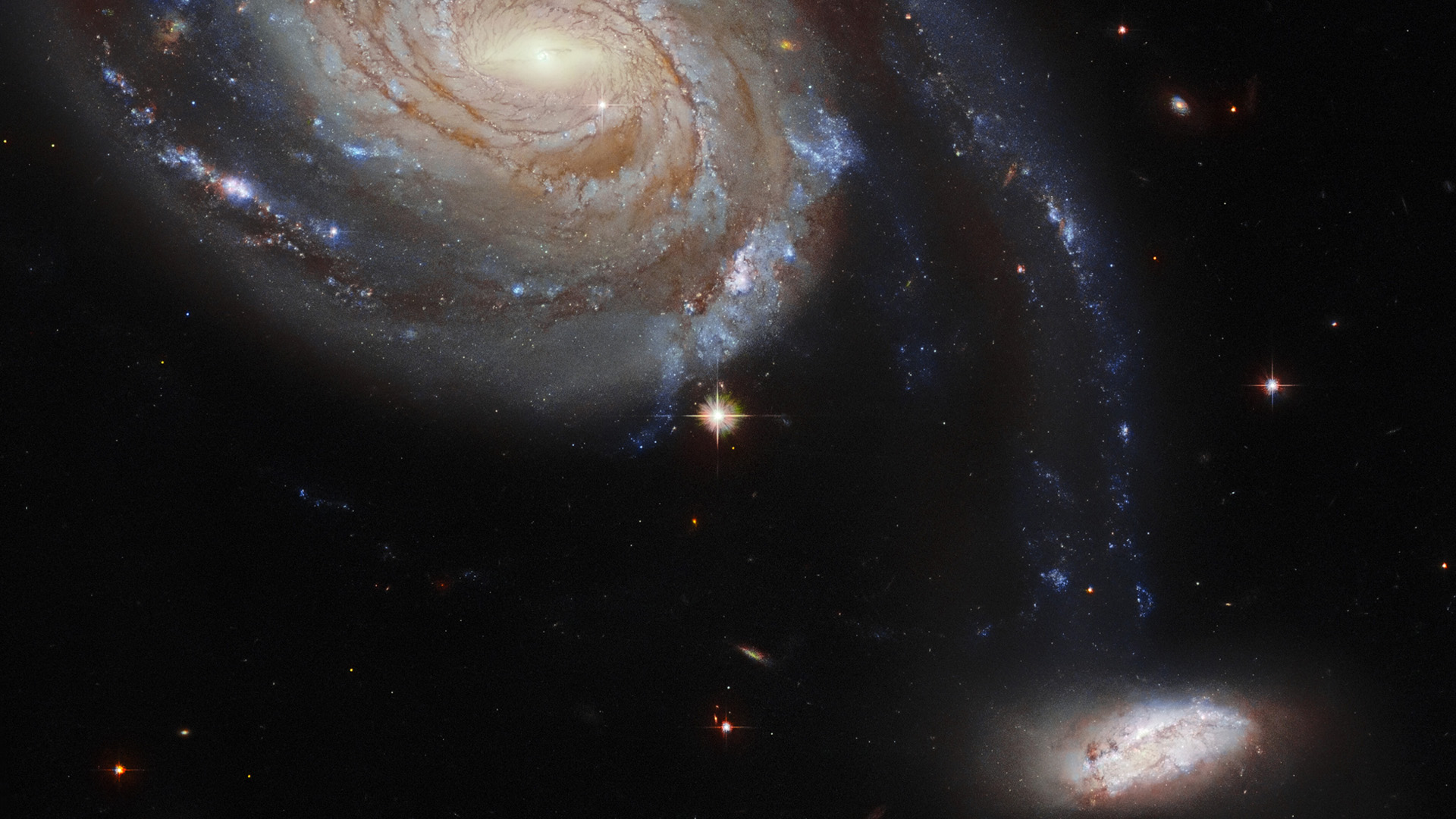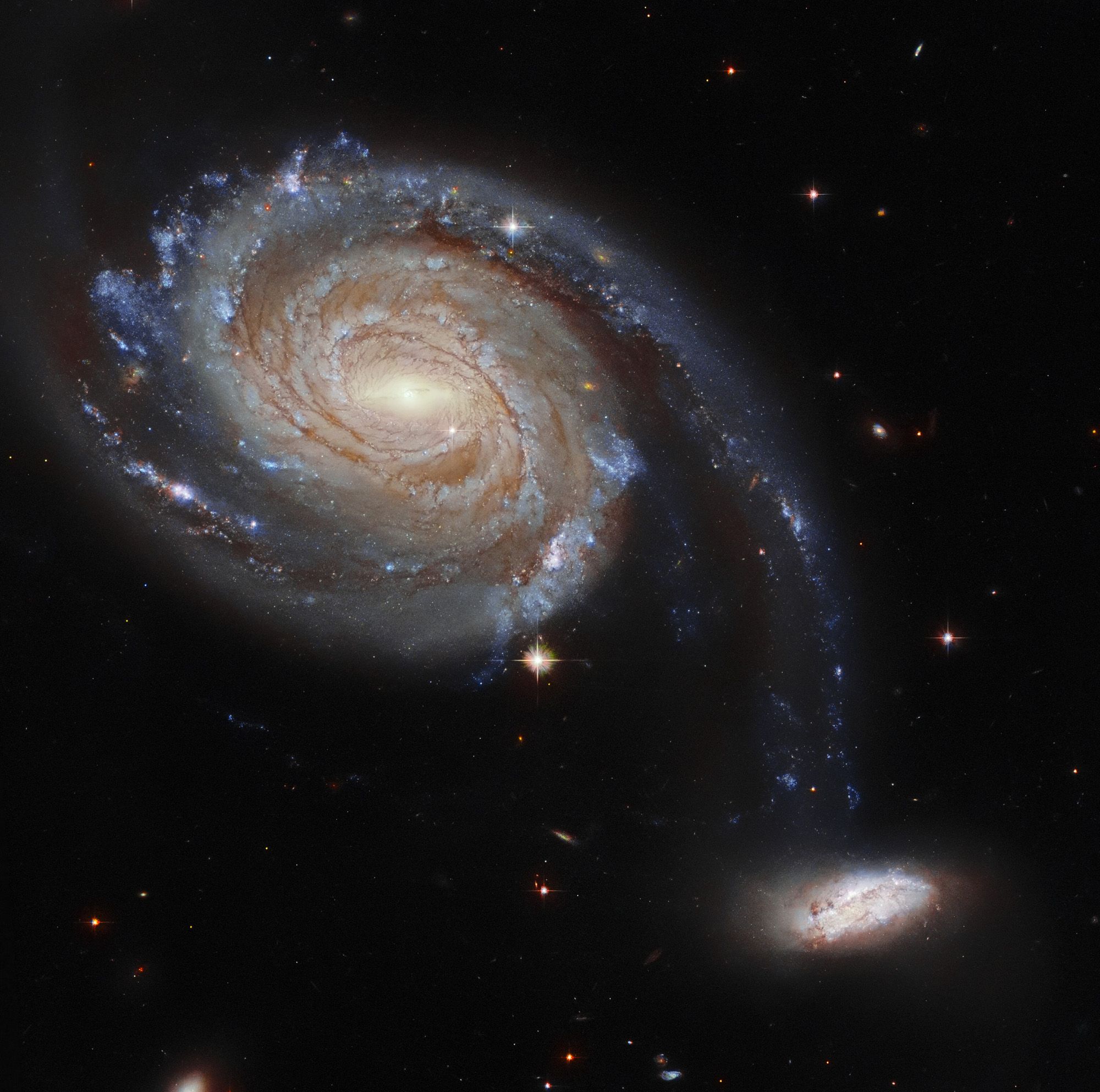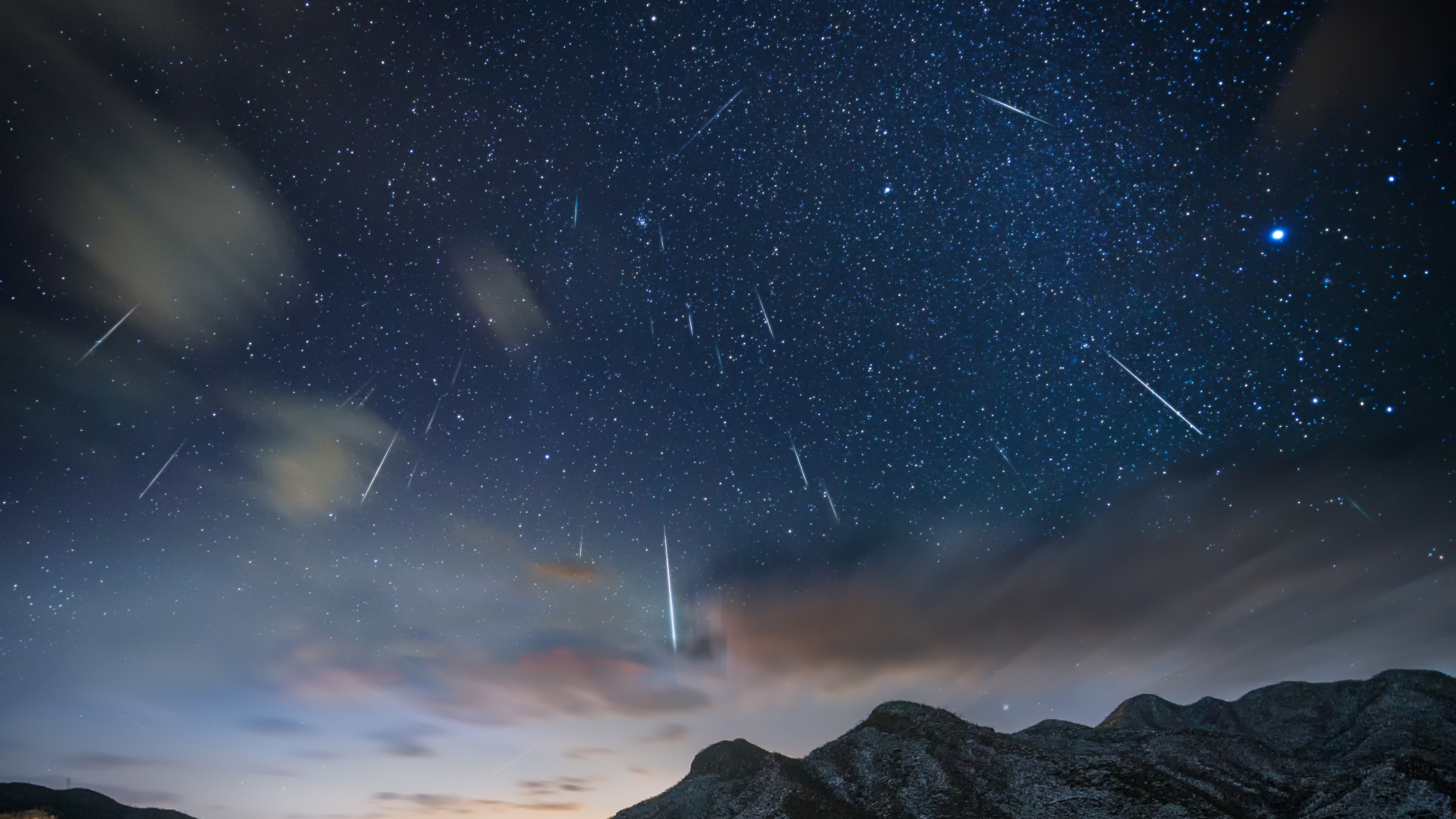Hubble telescope spots a pair of 'squabbling' galaxies locked in cosmic dance

The Hubble Space Telescope caught a pair of "squabbling" galaxies in action, according to the European Space Agency.
The pair of objects is known as Arp 86 and includes two galaxies roughly 220 million light-years away from Earth in the constellation Pegasus. They are known individually as NGC 7753 and the much smaller companion NGC 7752.
"The diminutive companion galaxy almost appears attached to NGC 7753, and it is this peculiarity that has earned the designation 'Arp 86' – signifying that the galaxy pair appears in the Atlas of Peculiar Galaxies compiled by the astronomer Halton Arp in 1966," ESA officials wrote in a statement about the new research.
"The gravitational dance between the two galaxies will eventually result in NGC 7752 being tossed out into intergalactic space or entirely engulfed by its much larger neighbor," the added.
Related: The best Hubble Space Telescope images of all time!
The Hubble Space Telescope observations were meant to shed light on how cold gas in the area contributes to the formation of young stars observed in the image. The observatory examined star clusters, gas clouds and dust clouds in several environments in the neighborhood, including other galaxies outside of Arp 86, ESA stated.
The space telescope's work was combined with measurements from the Atacama Large Millimeter/submillimeter Array (ALMA), a set of telescopes in the Chilean Andes optimized to peer through galactic dust in young systems. Between ALMA and Hubble, the research team is seeking more information about how stars are formed.
Breaking space news, the latest updates on rocket launches, skywatching events and more!
The research will also assist with future work by the James Webb Space Telescope, which is set to launch late in 2021 to explore the origins of the universe. One of Webb's research projects will be to look at dusty galaxies (such as Arp 86) to learn more about star evolution, ESA stated.
Follow Elizabeth Howell on Twitter @howellspace. Follow us on Twitter @Spacedotcom and on Facebook.

Elizabeth Howell (she/her), Ph.D., was a staff writer in the spaceflight channel between 2022 and 2024 specializing in Canadian space news. She was contributing writer for Space.com for 10 years from 2012 to 2024. Elizabeth's reporting includes multiple exclusives with the White House, leading world coverage about a lost-and-found space tomato on the International Space Station, witnessing five human spaceflight launches on two continents, flying parabolic, working inside a spacesuit, and participating in a simulated Mars mission. Her latest book, "Why Am I Taller?" (ECW Press, 2022) is co-written with astronaut Dave Williams.

